A teaching method is a set of principles and methods used by teachers to enable student learning. These strategies are determined partly on subject matter to be taught and partly by the nature of the learner. For a particular teaching method to be appropriate and efficient it has take into account the learner, the nature of the subject matter, and the type of learning it is supposed to bring about.
Autodidacticism or self-education is a education without the guidance of masters or institutions. Generally, autodidacts are individuals who choose the subject they will study, their studying material, and the studying rhythm and time. Autodidacts may or may not have formal education, and their study may be either a complement or an alternative to formal education. Many notable contributions have been made by autodidacts.

Pedagogy, from Ancient Greek παιδαγωγία (paidagōgía), most commonly understood as the approach to teaching, is the theory and practice of learning, and how this process influences, and is influenced by, the social, political, and psychological development of learners. Pedagogy, taken as an academic discipline, is the study of how knowledge and skills are imparted in an educational context, and it considers the interactions that take place during learning. Both the theory and practice of pedagogy vary greatly as they reflect different social, political, and cultural contexts.
A didactic method is a teaching method that follows a consistent scientific approach or educational style to present information to students. The didactic method of instruction is often contrasted with dialectics and the Socratic method; the term can also be used to refer to a specific didactic method, as for instance constructivist didactics.
Critical literacy is the ability to find embedded discrimination in media. This is done by analyzing the messages promoting prejudiced power relationships found naturally in media and written material that go unnoticed otherwise by reading beyond the author's words and examining the manner in which the author has conveyed their ideas about society's norms to determine whether these ideas contain racial or gender inequality.
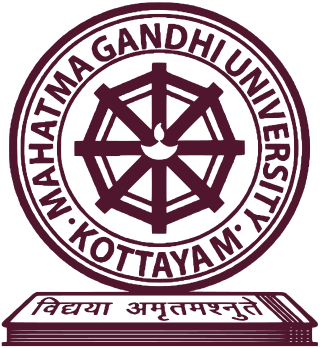
Mahatma Gandhi University (MGU), commonly referred to as MG University, is a state owned public university headquartered in Kottayam in the state of Kerala, India. It was established on 2 October 1983 on Gandhi Jayanti day. Mahatma Gandhi University has been approved by University Grants Commission (UGC) and accredited (A) by the National Assessment and Accreditation Council of India. The university has around 300 affiliated colleges spread over five districts in central Kerala.
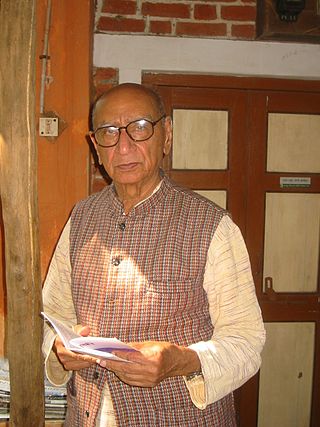
Narayan Desai was an Indian Gandhian and author.

Pedagogy of the Oppressed is a book by Brazilian educator Paulo Freire, written in Portuguese between 1967 and 1968, but published first in Spanish in 1968. An English translation was published in 1970, with the Portuguese original being published in 1972 in Portugal, and then again in Brazil in 1974. The book is considered one of the foundational texts of critical pedagogy, and proposes a pedagogy with a new relationship between teacher, student, and society.
G. Ramachandhran was a soldier for the Gandhian cause, social reformer and a teacher. With his wife, Dr. T. S. Soundram, daughter of T V Sundaram Iyengar, founder of TVS Group, he started the Gandhigram, Tamil Nadu in 1945. He authored several books. Viswabharati, Rabindranath Tagore's University, in Santhiniketan awarded him the higher title "Desikottama".
Hooghly Gour Hari Harijan Vidya Mandir is a co-ed school in Chawk Bazar near Bandel/Chinsurah, India, on the bank of the Hooghly River. The school was inaugurated by Mahatma Gandhi on 8 March 1921. Since then it has been a well-known center providing primary, secondary and higher secondary education in Hindi medium.
Mahatma Gandhi Inter College, is a U.P. board affiliate college in Gorakhpur, Uttar Pradesh, India, which provides education in Hindi and English mediums with all three Streams.
Krishna Kumar is an Indian intellectual and academician, noted for his writings on the sociology and history of education. His academic oeuvre has drawn on multiple sources, including the school curriculum as a means of social inquiry. His work is also notable for its critical engagement with modernity in a colonized society. His writings explore the patterns of conflict and interaction between forces of the vernacular and the state. As a teacher and bilingual writer, he has developed an aesthetic of pedagogy and knowledge that aspires to mitigate aggression and violence. In addition to his academic work, he writes essays and short stories in Hindi, and has also written for children. He has taught at the Central Institute of Education, University of Delhi, from 1981 to 2016. He was also the Dean and Head of the institution. From 2004 to 2010, he was Director of the National Council of Educational Research and Training (NCERT), an apex organization for curricular reforms in India. He was awarded the Padma Shri by the President of India in 2011.

Government Inter College Deoria or GIC Deoria is a historical college. Located in the Deoria district, Uttar Pradesh, India and is 2 km (1.2 mi) away from the Deoria Railway Station and 2.9 km (1.8 mi) away from the Deoria Bus Stand. The old name of this college was King Edward High School. It was established on 8 October 1912. Its current principal is Mr. P. K. Sharma. There are hostels here and there is also two bicycle stand.
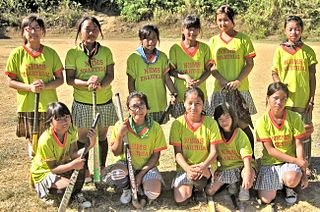
Education in Mizoram consists of a diverse array of formal education systems ranging from elementary to university, from training institution to technical courses. The Government of India imposes mandatory education at least up to the basic level. For this public schools are made free of fees, and provided with free textbooks and school lunch.
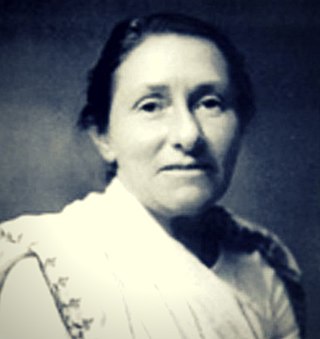
Sarala Behn was an English Gandhian social activist whose work in the Kumaon region of India helped create awareness about the environmental destruction in the Himalayan forests of the state. She played a key role in the evolution of the Chipko Movement and influenced a number of Gandhian environmentalists in India including Chandi Prasad Bhatt, Bimala behn and Sunderlal Bahuguna. Along with Mirabehn, she is known as one of Mahatma Gandhi's two English daughters. The two women's work in Garhwal and Kumaon, respectively, played a key role in bringing focus on issues of environmental degradation and conservation in independent India.
Marjorie Sykes was a British educator who went to live in India in the 1920s and joined the Indian independence movement, spending most of the remainder of her life in India. She wrote many books and became acquainted with many of the leading figures in Indian politics and culture, including Rabindranath Tagore and Mahatma Gandhi.
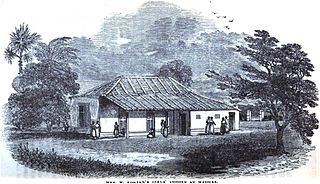
The Bentinck Higher Secondary School is located on Jermiah Road, Vepery, Chennai, near the Vepery Police Station. The school is considered to be one of Chennai's best girls' schools and is aided by Government of Tamilnadu. The school offers education to girls in English, Tamil and Telugu mediums till class 10. English and Tamil medium in class 11 and 12. The school is also known as simply the Bentinck School or Bentinck Vepery. The school is 185 years old. Started in 1837 with just 21 students, the school now has more than 2000 students.
Kishorlal Ghanshyamlal Mashruwala was an Indian independence activist as well as biographer, essayist and translator. Educated in Bombay and Agra, he completed BA and LLB. He was an associate of Mahatma Gandhi and was deeply influenced by him. He extensively wrote on education, religion and philosophy as well as translated some works in Gujarati.

Thirumalayaperumal Karunakaran was an Indian engineer, academic, social organizer and reformer who worked on rural development problems in India and other countries. He proposed a model of decentralized development called the Rural Economic Zone as an alternative to the Special Economic Zone model of development. He served as Vice-Chancellor of two Gandhian Rural Universities, and served as the director of the Mahatma Gandhi Institute for Rural Industrialization (MGIRI) and founded the Agrindus Institute in Wardha.

The Mahatma Gandhi 150th Birth Anniversary Year Padyatra or 2019 Gandhi March or “Gandhi Kooch” was a cultural march held during the celebration of 150th birth anniversary of Mahatma Gandhi in Bhavnagar district of Gujarat, India. The 150km long march lasted for seven days from 16 January 2019 to 22 January 2019. The event was organized by Mansukh L. Mandaviya, the then Union Minister of State for Ports, Shipping and Waterways and Union Minister of State for Chemical and Fertilizer, now Union Health and Family Welfare Minister of India and a Rajya Sabha member from Gujarat. The march passed through 150 villages of Gujarat with 150 prominent followers of Gandhi as स्थायी पदयात्री while thousands of People joined the Padyatra Every day and Experienced the Gandhian Philosophy of Life. The aim of the march was to spread awareness for method of ‘Basic Education’ or ‘Buniyadi Shikshan’ an Education Method given by Mahatma Gandhi among public and to introduce the Gandhian philosophy to young generation.











